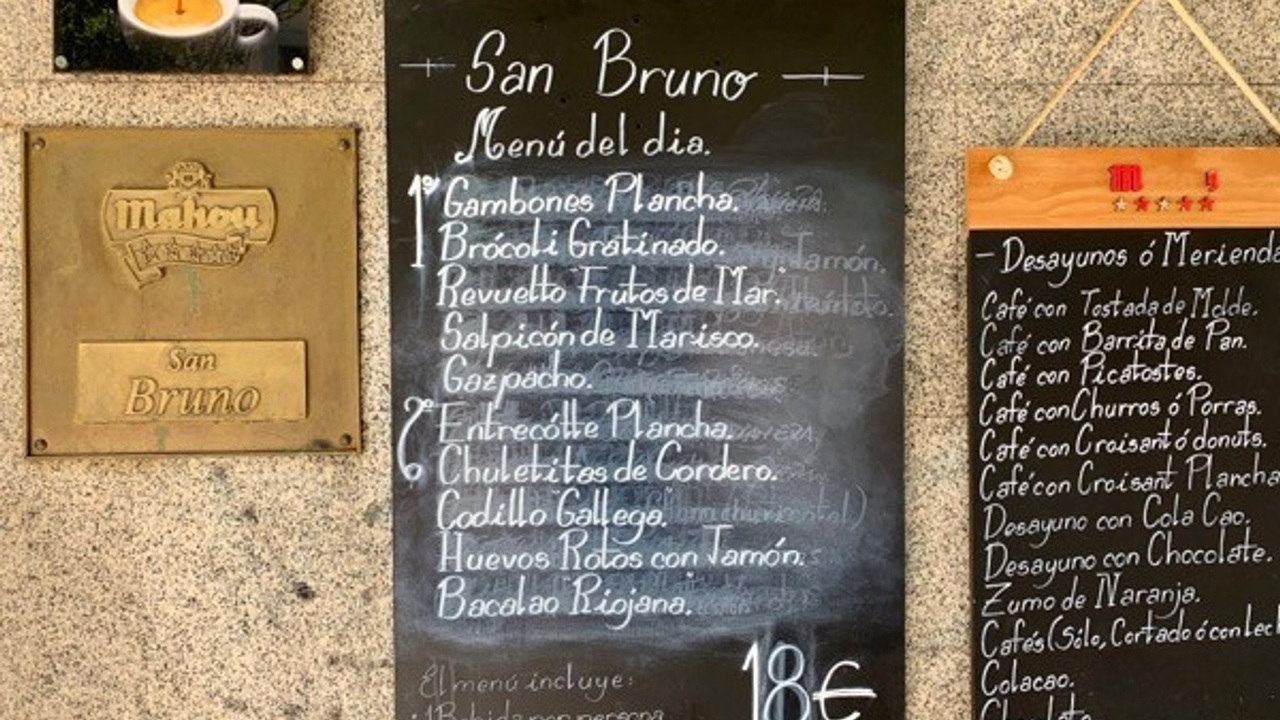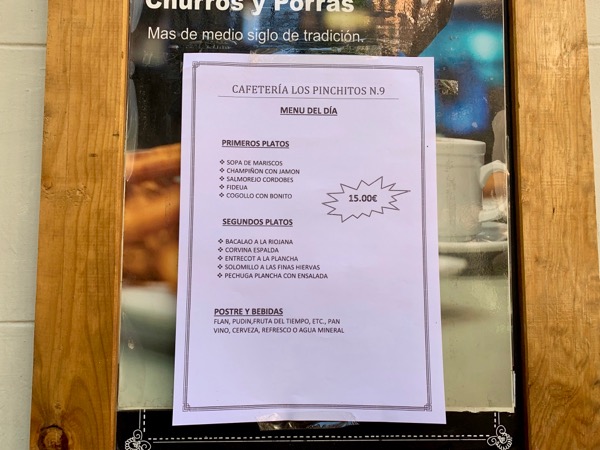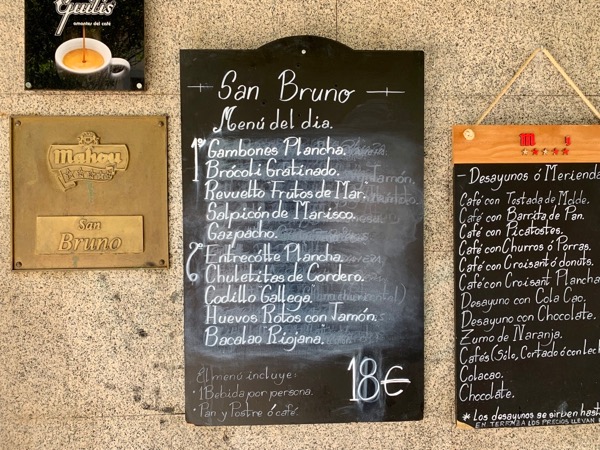Best menús del día in Madrid (2020)
Aug 28, 2012
The menú del día is one of the great culinary joys of Spain. They’re the filling, often delicious, multi-course midday meals provided by bars and restaurants for a very reasonable fixed price, booze included.
If you’re exploring the city, they can be a wonderfully cost-effective and efficient way to fill up before you get back to sightseeing. Plus, they’re a wonderful local culturally tradition – so eating a menú del día is a great way to feel a little more local in the city.
To help you along, I’ve created a list of my favourite menús del día in Madrid so you can eat like a king.
View this post on Instagram
But the little wrinkle with menús del día is thus: you can pay €12 for a really average 3-course lunch, or €14 for a great one. If you know where to go, the difference in cost can be minimal, but in quality dramatic.
Before we get to the list though, let me give you a little bit of info about the interesting history of this Spanish tradition, as well as some key things you need to know before sitting down to your first menú del día.
But click here if you want to jump straight to the list of the best menús del día in Madrid
Who invented the menú del día? Tourists!
Where did the tradition of the menú del día come from?
It actually began in the 1960s. That was a time when Spain was opening itself up to tourists for the first time, and heavily promoting tourism as a way to help the country’s strained post-civil war finances.
So the Franco government passed a law that forced restaurants to serve a menú turístico – a tourist menu. This tourist menu was the prototype of the menú del día. The idea was that tourists could get a reasonably-priced 3-course lunch with wine at any restaurant.

A TYPICAL MENÚ DEL DÍA – THREE COURSES, BREAD, AND A DRINK.
Restaurant owners hated the law at first, because as well as forcing them to serve the menu, it also fixed the price. And the fixed price was so low that they almost didn’t make any money out of it.
But so a tradition was born. And of course locals started to enjoy the cheap daily menú as well.
In the early 1981s the price controls were removed, and finally the restaurants could set the price as they wanted. And thus the tradition grew.
9 Tips To Know Before Your First Menú del Día
Here are 9 key things you need to know before sitting down for your first menú del día in Madrid:
- The selection: There will generally be about 3-5 dishes for the first course (el primero), the same number for the second course (el segundo) and the same for dessert (el postre)
- Alcohol included? A drink will always be included – whether it’s wine, beer, Coke or water. In cheaper places you may get an entire bottle of wine included (but it won’t be a great one), and in slightly better places you’ll just get a glass included
- Get ready for Casera: If you get a big bottle of rustic wine, you may also be given a bottle of “Casera” with it – this is a sweetened soda water which you mix with the wine to take the edge off and water it down (because you have to go back to work remember!)
- The many be no menu: The list of dishes available will usually be posted outside the bar. I suggest taking a photo and studying it at your table while you wait for your waiter. Why? Because often the waiter will simply come and rattle off what’s available, rather than hand you a printed menu (they change the dishes daily so it’s not that cost effective to print a new menu every day!). If they do this they will often say the dishes available very quickly. So if you have a photo, you can refer to it, and also point to the dishes you want.
- Dessert or coffee? Often the menú will come with dessert AND coffee, and sometimes it’s dessert OR coffee. In the latter case, if you order coffee in addition to dessert, you’ll likely pay about €1.50 on top of the menú price.
- Fruit means… fruit: One of the dessert options is often fruit – i.e. an apple, a banana, an orange. Be aware that you may simply get a an apple, a banana or an orange on a plate. If you do, you’ll probably get a knife as well (people in Spain often peel fruit like apples or peaches).
- Food comes quickly: The food will likely come very quickly – this is for people on their lunch break, so you’ll probably be in and out in an hour. So don’t choose this option is you’re looking for a long leisurely lunch.
- Weekdays only: Remember menús del día are only available on weekdays and only for lunch. They generally won’t be available for dinner.
- Menú doesn’t mean menu: Finally, remember that the word for a physical menu is carta. The word menú in Spanish means a series of courses for a fixed price.
Here’s a brief clip about menús del día from my 10 Things you Need to Know Before Travelling to Spain.
How Much Does a Menú del Día Cost?
Prices for menús del día in Madrid vary.
Generally though you’ll pay anywhere between €10 in a more rustic place and about €15 in a more modern place.
Some restaurants may have a few menú options, such as the €10 option, the €12.50 option and the €15 options. One of my old-school favourites La Sanabresa is one of these places. The difference is that in the more expensive options, you will get more expensive meat or fish etc.
Finally, remember that some restaurants will do a weekend menu, but it will generally be more expensive (see the menu below, where it costs €18).

MENÚS ON THE WEEKEND ARE MORE EXPENSIVE – THIS ONE IS €18.
The Best Menús del Día in Madrid
I’ve divided this section into neighbourhoods.
Click this PDF map of Madrid to see where all these neighbourhoods are!
Lavapiés
Restaurante Taberna Badila
Perhaps my favourite menú in Madrid. Home-cooking at its best.
La Esperanza
Love their menú. It’s traditional Spanish, but made with care and a modern touch.
Los Chuchis
Run by Englishman Scott, and the food is a blend of Spanish and British (Jaimie Oliver cookbooks on the shelf!). Delicious!
Barrio de los Austrias
Taberna El Zorzal
Modern cuisine – and very tasty
Fonda La Lechuga
Classic Madrid cuisine – recommendation from Annie Bennett
Taberna DNorte
Good northern Spanish food
La Latina
La Copita Asturiana
Rustic Asturian cuisine – recommendation from Leah of Madrid No Frills
Barrio de las Letras
La Sanabresa
A New York Times-featured classic! Rustic, cheap, delicious!
El Lacón
Solid, rustic fare
Terramundi
Solid Galician cuisine – recommendation from Phil K
Malasaña
Casa Macareno
Traditional Spanish in a gorgeous old Madrid tavern
Taberna El Rincón de Sancho
Traditional fare – a recommendation from Ben Kemper
Chueca
Momo
Modern food
Bogotá
Traditional Spanish cuisine – recommendation from Santiago Tejedor
Mercado de la Reina
Modern Spanish
Barrio Salamanca
Casa Dani
Rustic bar that’s famous for its tortilla, but also does a solid menú in the Mercado de la Paz.
Get Your Free Tapas Guide
If you’re planning a trip to Spain, you should download my free tapas guide. It has invaluable tapas tips, plus I include my 3 favourite tapas bars in Madrid, Barcelona, Seville and San Sebastian (yep, that’s 3 great tapas bars in each city!)
If you’re interested in learning more about how to eat like a local – this video below will give you lots of great tips and language so you can order in a Spanish restaurant or tapas bar!

